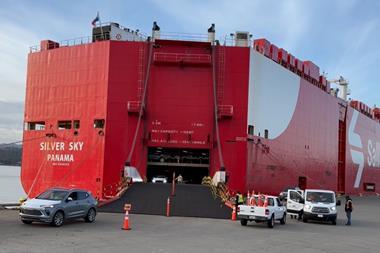As the automotive sector gathers pace in terms of production, it is also becoming defined by a greater degree of complexity and data. OEMs and suppliers are assigning more tasks to logistics service providers in the face of this growth in more complex supply and production, and this means those LSPs are in a good position to take a bigger share of the value chain. To do so effectively they also need to rethink how they manage the data at their disposal.

This is according to Christoph Stürmer, global lead analyst at PwC, the professional services company, who opened discussions at last week’s Automotive Logistics Europe conference.
“As vehicles get more complicated there are more parts to share, more services to deliver and more distribution,” said Stürmer. “It is a sort of triple-added effect in terms of operating and making a long-term business strategy.”
Complications are also going to come from the influx of new suppliers, including those from the traditional industries, but also those from the smart phone and robotics sectors, among others.
“They are building more and more electronics into the car going forward and there are new players coming into this,” acknowledged Peter Fuss, senior advisory partner for automotive at professional services rival, Ernst & Young. “We are seeing a lot of mega acquisitions across the automotive supply industry over the last couple of years, such as ZF acquiring TRW. “
This complexity in terms of supply is being driven in part by consumer trends for greater personalisation, in shorter demand times with greater flexibility, along with changing demographics.
Speaking for the OEMs, Carlos Lahoz, general manager of business planning and supply chain at Kia Motors, said a major concern was working out how to link these new consumer trends with the needs of the carmaker.
“When we engineer a supply chain structure we need to understand this link,” said Lahoz. “We need to ask ‘what are the latest technologies?’ We need more information and accurate delivery status as part of meeting customer expectation.”
He also said that Kia was eager to segment more of the supply chain as a means of maximising efficiency in stock management and get a more efficient order-to-delivery process.
Stürmer pointed out that as an intermediary between the OEM, the supplier and the distributors, logistics providers could benefit from the increasing amount of value that the OEM is handing over through this process.
“The share the OEM has in the value chain is decreasing year-over-year, which means that everybody else in the value chain, including service providers, can cover a wider share of that value chain,” said Stürmer.
This value is derived from the services now increasingly being handled by integrated service providers, and includes a range of tasks beyond transport – packaging, collection, documentation, quality control, examination of parts and products, as well as storage and sequencing.
“Since the OEMs are handing out more connected pieces of the value chain it may make a lot of sense to find the business models that also work in an interconnected fashion and provide a whole piece of the value chain,” said Stürmer. “I’m looking at transport, information and handling as integrated parts of a service that an OEM may need.
Part of the move forward according to Stürmer is for LSPs to use the massive amount of data underpinning all of these processes to their advantage.
“Big Data is the new oil,” he said. “We have a data rush in this industry and everybody is trying understand what to do with that data. We could look at the flow of logistics from a dataflow perspective and try to understand what that means in terms of the services you can offer.”
Videos from principal sessions are avaible on the programme page here.
The next conference in the global Automotive Logistics series will be in China in Shanghai April 14-16th. See more details here.



































